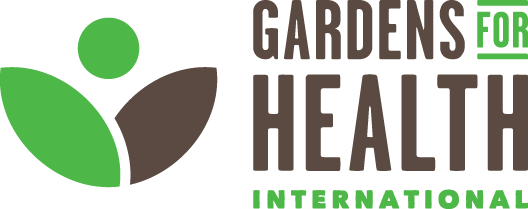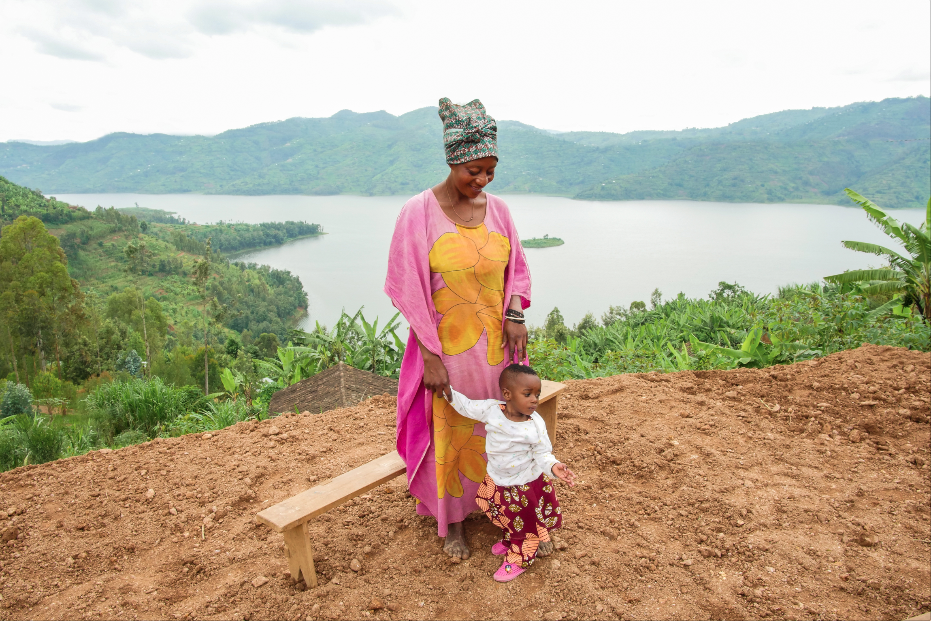The Impact of a Four Color Meal
Marie Jeanne and her daughter Quevinne at the entrance of their home in Gashaki, Musanze, Rwanda.
When it came to providing for her young daughter Quevinne, Marie Jeanne thought she did it all. The 37-year-old single mother made sure to cook big meals of beans and potatoes and keep a careful, loving watch over her only child. When she learned that Quevinne was malnourished at during a routine health screening at her local clinic, Marie Jeanne was bewildered.
“The healthcare worker saw that my child was weak and told me she was sick. Meanwhile, I thought I had provided everything she needed,” recounts Marie Jeanne. Like many rural Rwandan mothers, she did not realize that a diet of solely potatoes and beans, while filling, does not provide the essential nutrients for a child’s development.
Marie Jeanne lives with her mother, who also helps look after her young daughter.
When the clinic referred Marie Jeanne to join GHI’s Child Nutrition Program, she was reluctant at first. “People might think that my daughter is malnourished because I don’t care about her. I was worried and sad,” she explains. But her love for her child outweighed her reservations, and Marie Jeanne returned to the health clinic to attend her first GHI training.
Over the next 14 weeks, Marie Jeanne joined other mothers from her community to learn a variety of agriculture, nutrition, and health concepts. With the help of a local GHI Field Educator, Marie Jeanne learned how to cultivate nutritious vegetables in a home garden, prepare balanced meals quickly and easily with GHI’s One Pot, One Hour method, and prevent illness through hand washing and good hygiene practices. “Through the trainings, I finally understood why my child was affected and how that can also affect me,” she explains. “We learned all these things from GHI, and now, for example, I know that I must cook meals using four colors of food to prevent malnutrition in my family.“
Marie Jeanne noticed big changes in her daughter’s energy level after she learned to prepare four-color balanced meals from GHI.
Behind her small house high on a hill, Marie now plays with Quevinne in her home garden where she grows nutritious vegetables like squash, carrots, and amaranth. “My child does not get sick often anymore,” says Marie Jeanne as Quevinne runs around the garden bed. “She’s my only child, and she deserves to be healthy. Even though Quevinne can’t yet care for herself, I wish for her to become educated.”
Since graduating from the Child Nutrition Program, Marie Jeanne started passing her new skills to other families in her village. “Sometimes mothers just cook meals to feel full. But I explain that cooking a balanced meal doesn’t take much effort,“ she remarks. “I joined the program while my child was malnourished, but now she’s healthy. People notice and ask me what I did for my family, so I show them how to do it for themselves.”
Marie Jeanne and Quevinne in their home garden.
Story and photos by Eli LaBan




